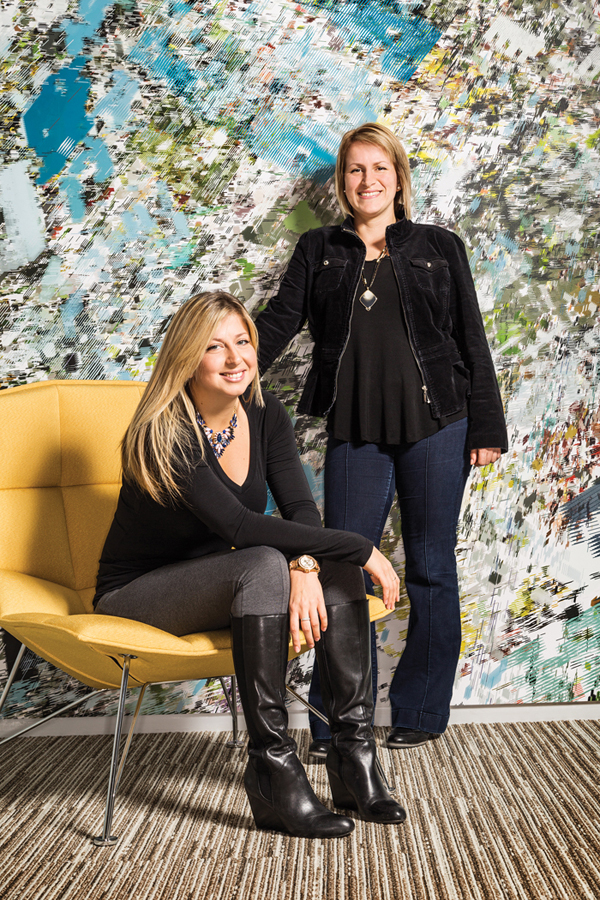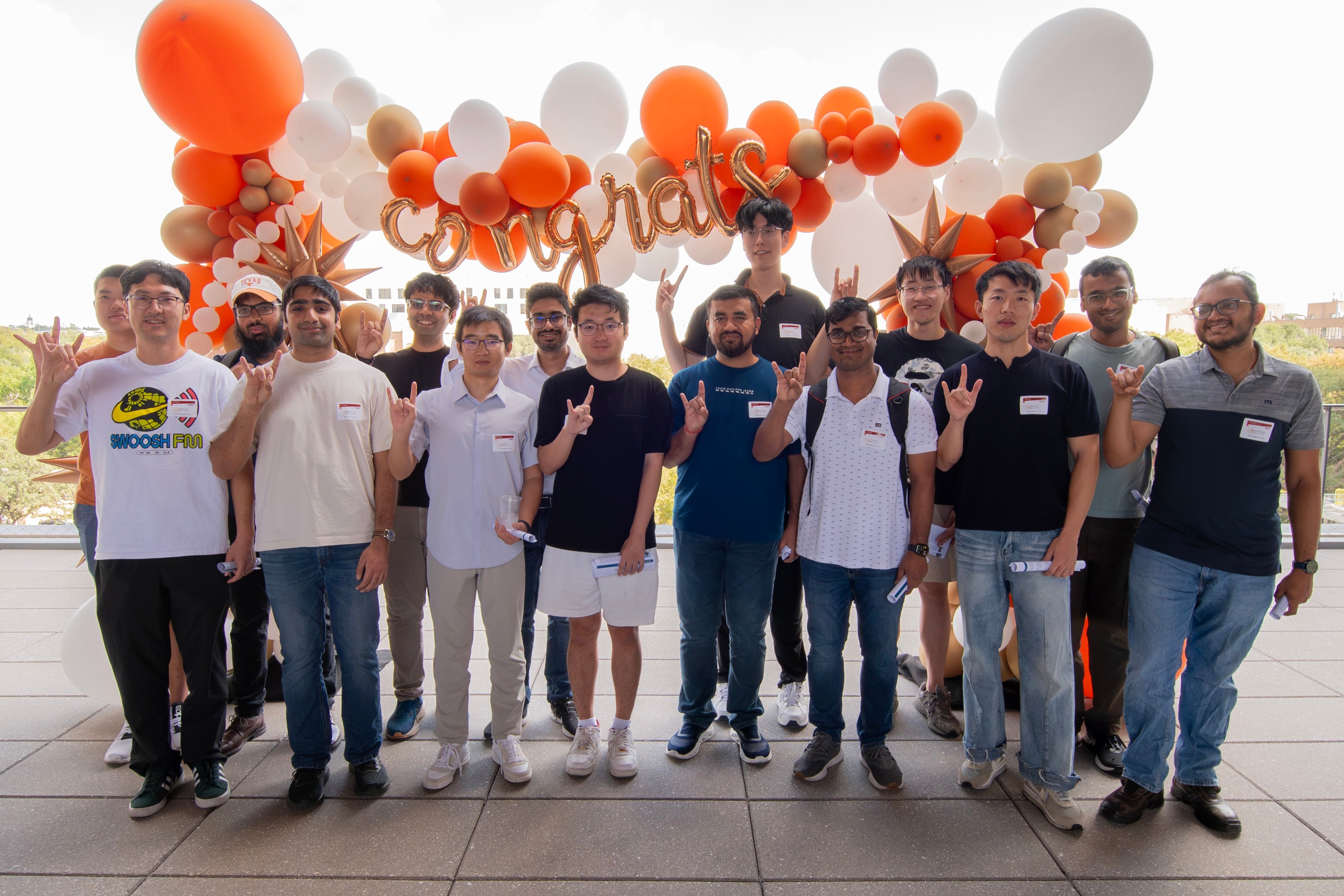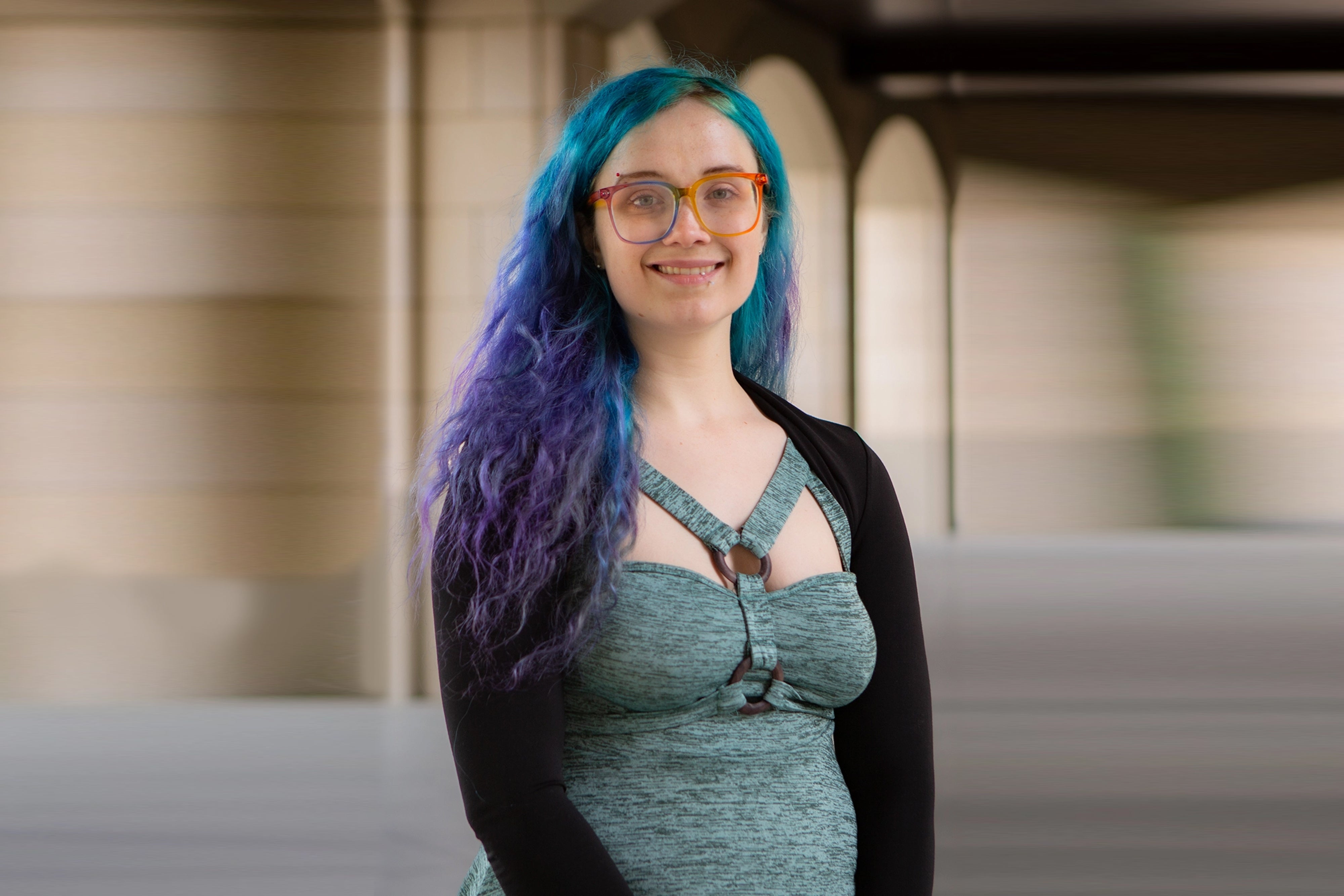Graduate Student Sisters Among Growing Trend Toward More Women in Math
With the most recent Fields Medal, the major award for math, going to a woman for the first time, more attention than usual has been on the under-representation of women in math graduate programs.
With the most recent Fields Medal, the major award for math, going to a woman for the first time, more attention than usual has been on the under-representation of women in math graduate programs. The American Mathematical Society found that on average 22.5 percent of Ph.D. math students in Group I (top-tier) math departments are women. However, at UT Austin, which has a Group I department, an increasing share of the math graduate students are women. They include Maja Taskovic, a fifth-year graduate student, and her sister Milica Taskovic, a first-year graduate student. Today, 32 percent of all UT Austin math graduate students are women, and in the new 2014 cohort that Milica belongs to, women make up 43 percent of Ph.D. candidates.

Milica and Maja Taskovic
What drew you to math? I understand that your father is a mechanical engineer, your mother is an accountant and your grandfathers were both math teachers. Does it run in the family?
Maja: My dad insisted I had to learn it so he gave me math problems, and we started working them and gradually I just got very interested. I started going to competitions and kept liking it more and more. There was a time, especially when I was competing, when Serbia was under sanctions, so it was very difficult to go abroad. But there were some competitions in Greece, in Bulgaria, in UK - so I got to travel. It was kind of like an extra bonus.
Milica: Because I’m seven years younger, I used to just watch Maja and my dad doing problems, so one day my dad asked me if I wanted to try it all out, so I did, and a few years later I was following Maja’s path. I sat down with my dad and tried to solve problems and that’s how I got involved in math. It was interesting at the beginning. It was hard, too. I didn’t get to play with kids outside...but I actually liked it because we got to travel since competitions weren’t usually in our school or our city, and I got to meet a lot of people, too. It was a lot of fun.
You both attended a special high school where you could focus on math. Was this sort of schooling typical in Serbia where you’re from?
Maja: It was very special. There was actually a mathematical high school in Belgrade; the whole high school is just for math students and they specially focus in math. But our city is much smaller and so there is not so much interest, so we were in a usual high school. They formed one or two special classes of 15 people in each where they tried to copy what was happening in Belgrade, to make a similar environment for us.
Milica: I kind of liked that school because it really focused on math and then you didn’t have to worry about other classes because professors were very considerate. You have a competition, do your work and we’ll grade you later when you’re done. So we really had time to focus on what we needed to do.
Maja: Also, some of the courses in high school were taught by university professors, especially hired for these two classes. So this was nice, to meet them before going to college.
What is your research on?
Maja: The Boltzmann Equation. We study properties of its solution. This equation is a very difficult one, and we try to find out as much as we can about the properties of the solution and how it behaves. At this level of research you usually don’t see explicit solutions like people usually get used to in classes like calculus. Instead people try to show they exist and then you work on looking at their properties and that’s what we’re doing. It’s very abstract. One of my two advisors, Irene Gamba, she’s also doing the Boltzmann Equation, and she does simulations on computers. My other advisor, Nataša Pavlović, is more theoretical like I am.
Milica: I don’t know yet. What I can say right now is I am a little bit different than Maja in that I’m not that interested in theory. I’m leaning towards applied math. I want to see something concrete. I think I might try to connect mathematics and programming or even biology. We’ll see. I have one more year to decide and to kind of explore.
What do you hope to do in the future once you’ve graduated? More research, teaching?
Maja: I’d like a combination. My ideal goal would be to end up in an institution like UT where I can become a professor one day. That is a long time, so I am going to apply for postdoc positions and see how it goes. I like both research and teaching. I’d like to mix it up.
Milica: Me? It’s so hard. In your first year it’s like you have all the opportunities - I would say industry. So I would like to go and work on something very specific.
Maja: You have time to change your mind.
Milica: Yes! That’s something I’m just thinking about.
What attracted you to UT?
Maja: For me there are several things. I knew I was interested in analysis, a sub-field of math, and UT has an amazing analysis group. There are between 8 and 10 professors who work on analysis and they cover different parts of analysis. If you try working with someone and it doesn’t work out, you can try with someone else. There are options, and I like that. And they are all top mathematicians and they are all very friendly. People are just so friendly, including the staff, the professors and the students - and that’s really, really nice.
Milica: Almost everything that Maja said. I think the main thing that attracted me is how friendly everyone was here. When I was deciding where to apply, one of my professors at GWU was a grad alum from another school, not UT. When I mentioned applying there he said, “Do you really want to go there? They’re so competitive. Students are kind of mean between themselves because they compete and try to always be better than the other one.” And Maja was just so happy. Whenever I would talk to her over Skype she would be like, “Everyone is so nice, professors are so approachable, you can talk to whomever.” So I think that’s the main thing. And the other thing is the analysis program. That’s why I came here, they have an awesome analysis program.
Maja: I think for her it was easier because she had a chance to visit me while I was a grad student, so she had a chance to see things and she liked it.
Milica: Yes and the city is awesome, too.
Are women better represented in math and science in Serbia than they are here?
Maja: I can speak just about math because I also met people internationally. I think in Eastern Europe it’s very normal to see girls. If you go to math Olympiad, usually the teams are all men. There were six people competing from each country and usually the teams are all men, but in my year there were two girls from Serbia out of six people, which was pretty good (laughs). At the level of professors, it’s not 50-50, but there are still a lot of female professors. It was just a normal thing.
Milica: My group, back at the University of Novi Sad, we had a lot of women. I never noticed if there were more men than women.
Maja: I have to say that I think UT is making a special effort at recruiting female graduate students and so I think we have an unusually high number of female grad students.
Do you get homesick at all?
Maja: Not me! (laughs)
Milica: I used to for the first two years, but then I got really used to the US. Now when I go back to Serbia I’m just thinking about when I’m coming back to the US (laughs).
You grew up in an area affected by conflict. Did growing up in Serbia influence your decision to study math?
Maja: How our parents brought us up did. They really stressed the importance of being a good student and being the best at everything you do, so maybe you have a chance to succeed in life. That’s probably why, at least in my case, I started so early. Another consequence of what was happening in Serbia is that industry was falling apart, and there were very few opportunities for jobs. So the question was where are you heading? The safest choice was to do some kind of fundamental science.
Milica: I completely agree. The whole education system there, too, is such that it makes you think well in advance to figure out what you want to do.
What do you like about living in Austin?
Maja: I like the nature. We live very close to the Ladybird Lake Trail so it’s very nice to walk there. I like the weather. I like the food: I’m learning all about this TexMex food (laughs). I love tacos! I’m going to miss them when I leave. You don’t have good tacos anywhere else.
Milica: And barbecue.
Maja: And barbecue, oh my gosh!
Do you think it has helped you acclimate here, having each other as sisters?
Maja: For me it’s much more fun!
Milica: Yes! It’s actually very helpful. We were in different states for a while and I actually felt really lonely and now I’m much happier with her. We can talk a lot, not just about math of course, we can talk about math too, but we understand each other very well.
Maja: Every morning we come here, we make coffee together and if you need a break during the day, she just stops by my office and we chat a little bit. It’s nice.
Milica: And it’s easy to communicate when you have a problem with school, if you’re struggling with something.
Maja: I’ve been through all of the things she’s now going through.



